An inside look at the V&A’s extraordinary Chanel archive
‘Gabrielle Chanel. Fashion Manifesto’, the V&A’s blockbuster new Chanel exhibition, is a deep dive into the couturier’s culture-shifting collections. Wallpaper* takes a closer look with curator Oriole Cullen
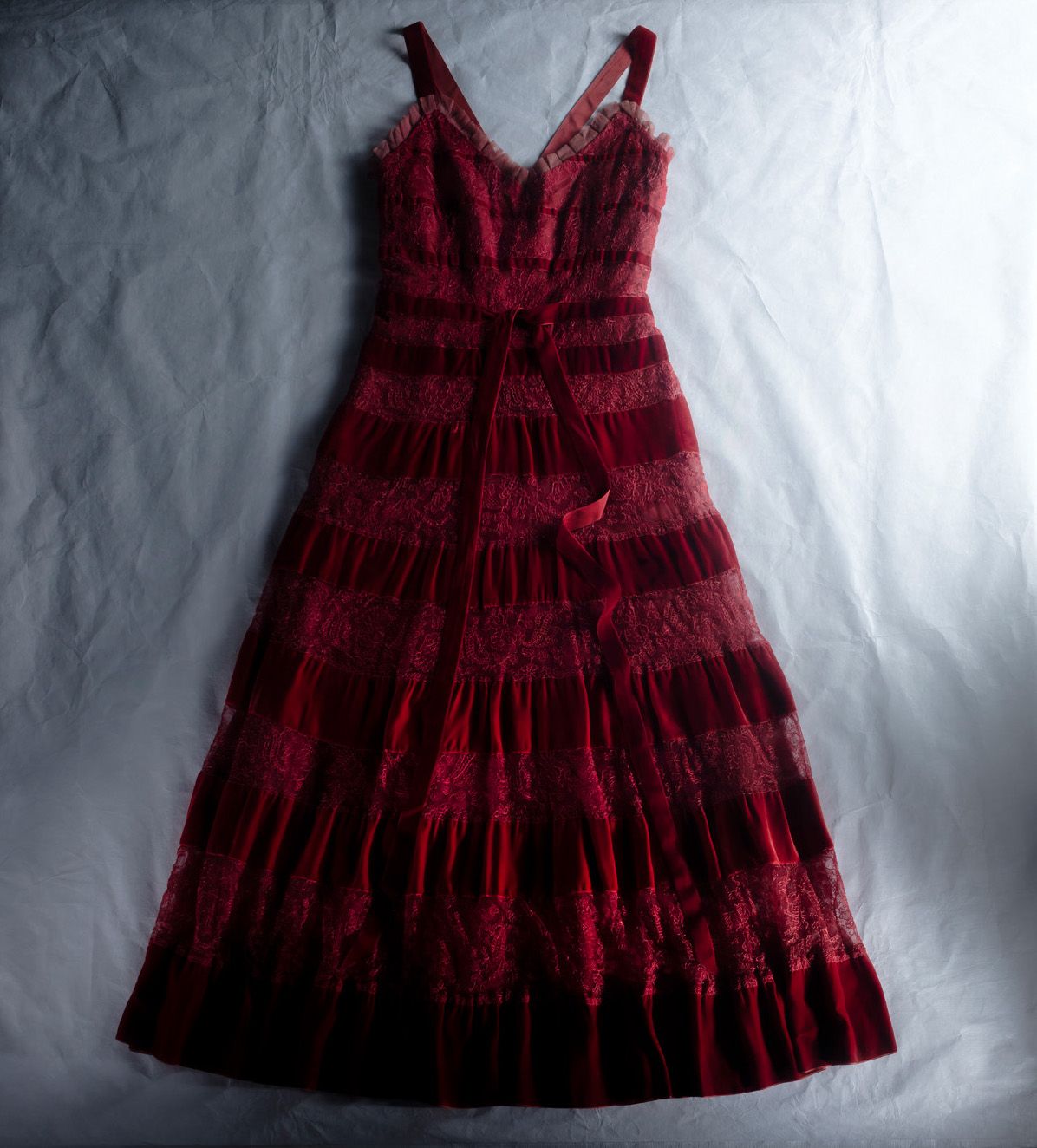
‘It was important to go back to the garments,’ says V&A fashion curator Oriole Cullen about the museum’s latest blockbuster fashion exhibition, ‘Gabrielle Chanel. Fashion Manifesto’ (which we previewed earlier this year). ‘Coco Chanel’s personal life is something that people are very drawn to and interested in. But less is said about the clothes.’
It is not difficult to see the appeal of Gabrielle Chanel’s colourful life story. There was her poor upbringing in a French nunnery, a youth spent as a shop girl and café singer, and the opening of her first millinery shop on Paris’ Rue Cambon in 1910. Then her dalliances with high society, fated romances, summers on the French Riviera with Pablo Picasso and Jean Cocteau, and journeys to golden age Hollywood to costume its biggest stars.
Inside ‘Gabrielle Chanel. Fashion Manifesto’ at the V&A
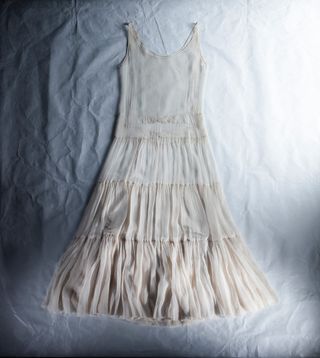
Silk chiffon dress, S/S 1930, by Chanel
And though ‘Fashion Manifesto’ uses these moments as backdrops, the focus remains largely on her design sensibility, which set a template for the modern woman’s wardrobe. ‘She defined her approach to fashion quite early on,’ says Cullen. ‘It’s about chic, simple clothing, looking at movement and the body. These elements she creates – the jersey, the little black dress, the suit – these are the things she comes back to time and again and refines them.’
The Storey Studio-designed exhibition is divided into ten parts and begins with a 1916 marinière blouse, one of the French couturier’s oldest surviving pieces. Crafted from fine-gauge silk jersey and tied loosely around the waist, it is decidedly modern – it would not take a stretch to imagine one of the current exhibition’s attendees wandering past in it. Also on show are early iterations of her signature garments and a staggering display of two-piece suits encased in double-height glass boxes, as well as a recreation of the faceted mirrored staircases at her Rue Cambon apartment, where she would stage client presentations.
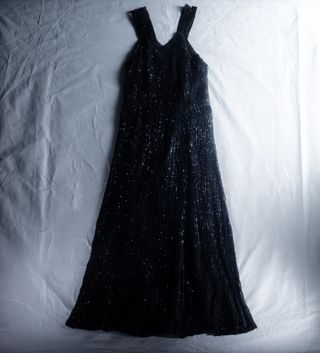
Silk chiffon and pongee silk dress with sequins and Lunéville embroidery, 1930-31, by Chanel
Particularly striking are her diaphanous evening gowns (some pictured here, photographed within the V&A archive by Oskar Proctor). ‘They’re very drapey,’ says Cullen. ‘They aren’t worn over lots of petticoats so they move beautifully.’ A Parisian glamour is suggested in glimmering surface decoration from sequins and paillettes on otherwise minimal gowns. Her garments are very minimal and clean, but to use something like all-over sequins is amazingly effective. It’s not superfluous decoration, it’s just the body of the dress.’
The exhibition spans Chanel’s six-decade-long career in fashion, from 1910 to her final S/S 1971 collection (Chanel would die in 1971 in her apartment in the Ritz Hotel Paris). Cullen finds her later work particularly fascinating, transgressive in its use of colour and gleaming contemporary fabrics like lamé. ‘Some of the colours and textiles she was using were incredible,’ says Cullen. ‘We wanted to bring that vibrancy, because she was experimenting all the time.’
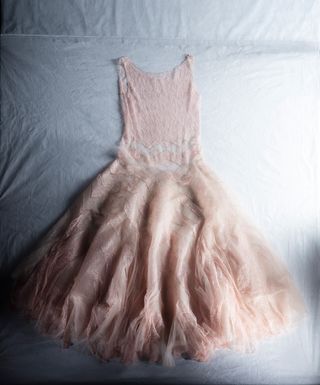
Silk tulle, satin crêpe, chiffon and lace dress, S/S 1930, by Chanel
What Cullen hopes people take away from the show is the idea of Chanel as a ‘fashion maverick’ and early brand-builder. ‘When she started, couturiers weren’t really received in polite society; you might have known their names, but not what they looked like. But Chanel changed that. She was happy to be front and centre.’
Wallpaper* Newsletter
Receive our daily digest of inspiration, escapism and design stories from around the world direct to your inbox.
‘Gabrielle Chanel: Fashion Manifesto’ is on show until 25 February at the V&A, London SW7.
This article appears in the November 2023 Art Issue of Wallpaper*, available in print, on the Wallpaper* app on Apple iOS, and to subscribers of Apple News +. Subscribe to Wallpaper* today.
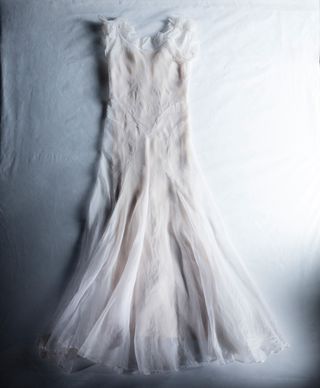
Organdy dress, 1932, by Chanel
Jack Moss is the Fashion Features Editor at Wallpaper*, joining the team in 2022. Having previously been the digital features editor at AnOther and digital editor at 10 and 10 Men magazines, he has also contributed to titles including i-D, Dazed, 10 Magazine, Mr Porter’s The Journal and more, while also featuring in Dazed: 32 Years Confused: The Covers, published by Rizzoli. He is particularly interested in the moments when fashion intersects with other creative disciplines – notably art and design – as well as championing a new generation of international talent and reporting from international fashion weeks. Across his career, he has interviewed the fashion industry’s leading figures, including Rick Owens, Pieter Mulier, Jonathan Anderson, Grace Wales Bonner, Christian Lacroix, Kate Moss and Manolo Blahnik.
-
 ICON 4x4 goes EV, giving their classic Bronco-based restomod an electric twist
ICON 4x4 goes EV, giving their classic Bronco-based restomod an electric twistThe EV Bronco is ICON 4x4’s first foray into electrifying its range of bespoke vintage off-roaders and SUVs
By Jonathan Bell Published
-
 ‘Dressed to Impress’ captures the vivid world of everyday fashion in the 1950s and 1960s
‘Dressed to Impress’ captures the vivid world of everyday fashion in the 1950s and 1960sA new photography book from The Anonymous Project showcases its subjects when they’re dressed for best, posing for events and celebrations unknown
By Jonathan Bell Published
-
 Inside Camperlab’s Harry Nuriev-designed Paris store, a dramatic exercise in contrast
Inside Camperlab’s Harry Nuriev-designed Paris store, a dramatic exercise in contrastThe Crosby Studios founder tells Wallpaper* the story behind his new store design for Mallorcan shoe brand Camperlab, which centres on an interplay between ‘crushed concrete’ and gleaming industrial design
By Jack Moss Published
-
 Margot Robbie, Marina Abramović and a 15-step Korean scalp treatment: the most-read Wallpaper* beauty stories of 2024
Margot Robbie, Marina Abramović and a 15-step Korean scalp treatment: the most-read Wallpaper* beauty stories of 2024The news of Margot Robbie becoming the face of Chanel No.5 and an illustrated guide to a 15-step Korean scalp treatment are just two of the most-read Wallpaper* beauty stories from the year gone by
By Hannah Tindle Published
-
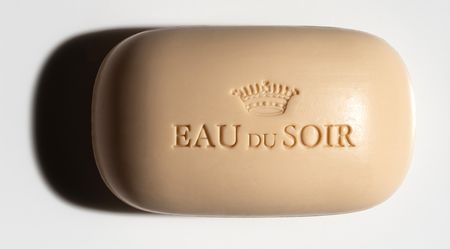 Unboxing beauty products from 2024, as seen on the pages of Wallpaper*
Unboxing beauty products from 2024, as seen on the pages of Wallpaper*Wallpaper's 2024 beauty picks included Chanel lipstick, Bottega Veneta perfume and solid soap from the likes of Aesop, Celine, Diptyque, Hermès and Sisley
By Hannah Tindle Published
-
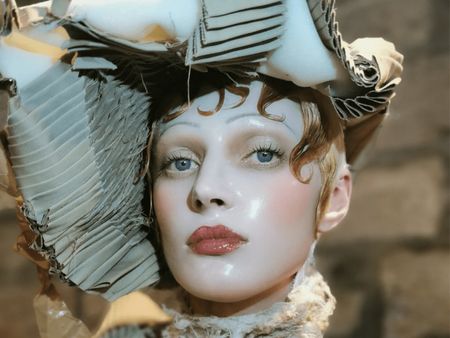 How 2024 brought beauty and fashion closer than ever before
How 2024 brought beauty and fashion closer than ever before2024 was a year when beauty and fashion got closer than ever before, with runway moments, collaborations and key launches setting the scene for 2025 and beyond
By Mahoro Seward Published
-
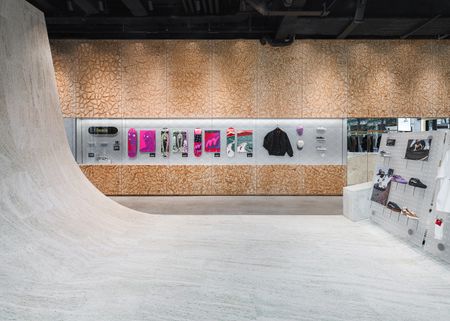 Vans’ West End store turns skatepark, with a 200 sq m travertine ramp
Vans’ West End store turns skatepark, with a 200 sq m travertine rampPart store, part community hub, Vans West End in London ramps up its skateboarding credentials with a design by Andrea Caputo Studio
By Simon Mills Published
-
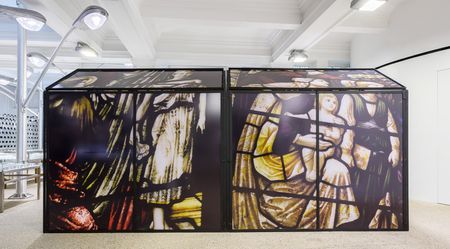 20 years of Dover Street Market’s transporting in-store installations, from giant elephants to soft toys
20 years of Dover Street Market’s transporting in-store installations, from giant elephants to soft toysAs Dover Street Market, Rei Kawakubo and Adrian Joffe’s radical London concept store, celebrates its 20th anniversary, we look back at ten of its most colourful installations, crafted alongside Simone Rocha, Jonathan Anderson, Martin Parr and more
By Orla Brennan Published
-
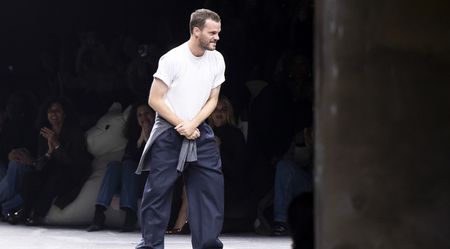 The wait is over: Matthieu Blazy is Chanel’s new creative director
The wait is over: Matthieu Blazy is Chanel’s new creative directorMatthieu Blazy has been appointed as the new artistic director at Chanel, after a critically lauded and commercially successful tenure as creative director of Bottega Veneta
By Jack Moss Published
-
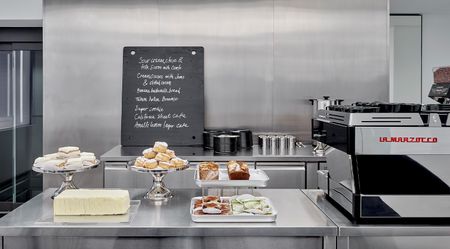 Alaïa’s secret new London café and bookstore is inspired by the art of hosting
Alaïa’s secret new London café and bookstore is inspired by the art of hostingHoused on the third floor of Alaïa’s London flagship, the intimate space – inspired by Azzedine Alaïa’s famed hospitality – includes a Violet Cakes bakery and a bookstore by Claire de Rouen
By Jack Moss Published
-
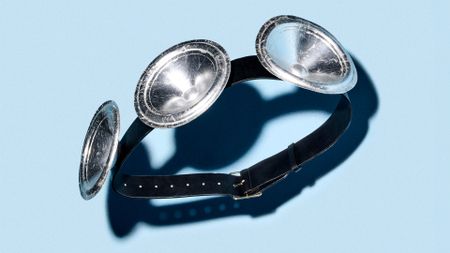 ‘Music is in the DNA of the brand’: AV Vattev on creating this year’s loudest accessory
‘Music is in the DNA of the brand’: AV Vattev on creating this year’s loudest accessoryRising London designer AV Vattev – who has recently outfitted Charli XCX and Troye Sivan for their viral ‘Sweat’ tour – talks about the influence of music on his ‘bold and unapologetic’ collections
By Jack Moss Published